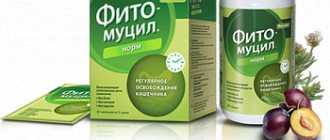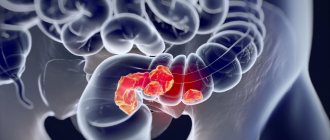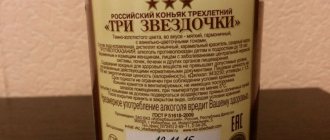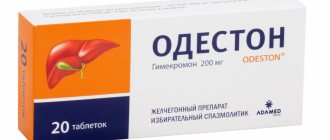Nutrition for gastritis: what can and cannot be eaten?
Gastritis is one of the most common diseases of our time. Frequent snacks and meals on the run, a wide variety of fast food, poisoning with low-quality food - all this can cause gastritis. This is probably why many people now suffer from stomach problems. But how to deal with them?
To do this, it is not at all necessary to constantly take medications; the main thing in treatment is a correct and well-chosen diet, which will not cause irritation of the mucous membranes and exacerbation of the disease, but at the same time saturate the body with all the necessary macronutrients and vitamins.
Basic Rules
The main goal of a diet for gastritis is to adhere to a diet that ensures normal digestion. The treatment table for gastritis (per day) should contain:
- 90-100 gr. protein (and 60% are animals),
- 50-80 gr. fat (75% animal)
- 300-320 gr. carbohydrates.
Nutrition rules for gastritis:
- Knowing the measure. With gastritis, the saying “after eating there should be a feeling of slight hunger” is more relevant than ever. Firstly, the feeling of fullness occurs only 10-15 minutes after eating, and, secondly, a full stomach does not cope well with its functions, especially with gastritis.
- Diet. Firstly, you should follow a meal schedule (at the same time). Secondly, with gastritis, meals should be fractional, 4-5 times a day, but at the same time it is necessary to avoid snacks (they provoke “excess” secretion of gastric juice and reduce its production during breakfast/lunch/dinner, which disrupts processes of processing and assimilation of food). Reading while eating, watching TV and “eating while running” should be strictly excluded.
- Rest after eating. After each meal, you need to rest for 15-20 minutes (not necessarily sleep). You can read a book or listen to music.
- Chewing food. Chewing food for a long time (at least 25-30 seconds for each piece) promotes more thorough mechanical processing of food, which makes it easier for a sore stomach. In addition, hunger in this case is satisfied faster (which prevents overeating). Refusal of complex dishes
The total energy value should be 2200-2800 kcal.
Nutrition for high acidity
For this form of gastritis, it is recommended to use a diet aimed at thermal and mechanical sparing of the stomach, as well as at reducing gastric secretion.
Authorized products:
- casseroles, cheesecakes, dumplings, oven-baked cheesecakes;
- milk, especially with tea, all types of fermented milk products, including yogurt and curdled milk, fresh pureed cottage cheese;
- fish, meat or chicken soups cooked with cereal broth;
- white dry crackers, vegetable and butter, milk soups with cereals or pasta;
- steamed omelettes, eggs in a bag, vegetable dishes in the form of purees, puddings, souffles, weak tea, sweet fruits and berries in jelly, creams and compotes;
- veal, lean beef, chicken in the form of meatballs, puddings, zraz, steam cutlets (it is allowed to eat lean boiled meat in pieces 1-2 times a week).
Prohibited products:
- fatty mushroom and meat broths;
- carbonated drinks;
- smoked meats with spices;
- raw vegetables, pickles, marinades, spicy vegetable snacks, lemon juice;
- black bread.
The purpose of the diet for exacerbation of gastritis with high acidity is to normalize the functioning of the intestines and stomach, limiting thermal, chemical and mechanical irritants.
Authorized Products
Dietary food at this table involves the use of dried wheat bread or crackers. You can eat 200 g of thinly sliced and not very fried crackers per day. Unsweetened dry cookies are allowed.
Porridge is the main product
The basis of the diet is pureed porridge from semolina, rice (white rice), buckwheat and oatmeal, which are prepared in water or broth (low-fat). Butter is added in the amount of 5 g per serving, per day - 50 g.
Soups are also prepared with low-fat and non-rich fish or meat broth, adding permitted cereals, a minimum of vegetables, boiled and pureed meat, quenelles, egg flakes, meatballs, etc.
The fourth table involves the consumption of lean and lean varieties of beef, chicken, turkey, veal, and rabbits. To do this, the meat is additionally degreased, and the tendons and skin of the bird are removed.
Steam cutlets, soufflé or meatballs are prepared. They can also be stewed in a saucepan over water. When preparing cutlets, boiled rice or semolina is placed in the minced meat instead of bread. You can make pate from boiled meat with a minimum of salt.
Low-fat varieties of fish are prepared in pieces or chopped in the form of quenelles, cutlets and meatballs. They can also be cooked by steaming or in water. 1-2 eggs per day are allowed, which are cooked soft-boiled or steamed omelettes, added to soufflés and soups.
As for cottage cheese, it should be unleavened (non-acidic) and mashed; you can use it to make steamed soufflés and casseroles. Vegetables are eaten only as a pureed addition to soups and in small quantities.
Mashed raw apples, applesauce, berry jelly from blueberries, dogwood, quince, bird cherry, pears and fruit drinks are allowed. If well tolerated, you can drink diluted fresh juices from non-acidic berries (diluted 1:1 with water). The exceptions are grape, apricot and plum juices. Herbal tea, rosehip decoction, bird cherry infusion, dried dogwood, blueberries, green and black tea, still water up to 1.5 liters per day are allowed.
Table of permitted products
| Proteins, g | Fats, g | Carbohydrates, g | Calories, kcal | |
Fruits | ||||
| quince | 0,6 | 0,5 | 9,8 | 40 |
| pears | 0,4 | 0,3 | 10,9 | 42 |
| apples | 0,4 | 0,4 | 9,8 | 47 |
Nuts and dried fruits | ||||
| dried pears | 2,3 | 0,6 | 62,6 | 249 |
Cereals and porridges | ||||
| buckwheat (kernel) | 12,6 | 3,3 | 62,1 | 313 |
| semolina | 10,3 | 1,0 | 73,3 | 328 |
| oat groats | 12,3 | 6,1 | 59,5 | 342 |
| cereals | 11,9 | 7,2 | 69,3 | 366 |
| white rice | 6,7 | 0,7 | 78,9 | 344 |
Bakery products | ||||
| white bread crackers | 11,2 | 1,4 | 72,2 | 331 |
Confectionery | ||||
| Maria cookies | 8,7 | 8,8 | 70,9 | 400 |
Dairy | ||||
| skim milk | 2,0 | 0,1 | 4,8 | 31 |
| acidophilus | 2,8 | 3,2 | 3,8 | 57 |
Cheeses and cottage cheese | ||||
| cottage cheese 0.6% (low fat) | 18,0 | 0,6 | 1,8 | 88 |
Meat products | ||||
| boiled beef | 25,8 | 16,8 | 0,0 | 254 |
| boiled veal | 30,7 | 0,9 | 0,0 | 131 |
| rabbit | 21,0 | 8,0 | 0,0 | 156 |
Bird | ||||
| boiled chicken | 25,2 | 7,4 | 0,0 | 170 |
| turkey | 19,2 | 0,7 | 0,0 | 84 |
Oils and fats | ||||
| butter | 0,5 | 82,5 | 0,8 | 748 |
Non-alcoholic drinks | ||||
| mineral water | 0,0 | 0,0 | 0,0 | — |
| green tea | 0,0 | 0,0 | 0,0 | — |
| black tea | 20,0 | 5,1 | 6,9 | 152 |
| * data is per 100 g of product | ||||
Nutrition for low acidity
The purpose of the diet for gastritis with low acidity is to stimulate (in moderation) the production of gastric juice, as well as to mechanically spare the stomach.
Prohibited foods for hypoacid gastritis:
- restriction of pearl barley, legumes, millet;
- fresh bread, rich pastries (“heavy” food for the stomach, makes chemical and mechanical processing difficult);
- fatty and salty fish;
- vegetables and fruits with coarse fiber (white cabbage, turnips, radishes, cucumbers, bell peppers), mushrooms;
- fatty meat, meat with fascia (films), canned food, smoked meats (inadequate mechanical processing of food, excess release of hydrochloric acid);
- sharp and salty cheeses, milk – neutralizes hydrochloric acid;
- berries with grains or thick skin (raspberries, strawberries, red currants, gooseberries, figs);
- spices and spices (irritate the gastric mucosa), as well as chocolate, grape juice, alcohol;
- lard and fat from pork, beef, lamb (not digestible due to low production of hydrochloric acid, difficult to digest foods).
Food should be taken after the secretion of hydrochloric acid begins, that is, in the first phase (advertising or programs about food, beautiful photographs of food, “delicious” conversations can provoke the release of gastric juice).
Diet for gastritis in the acute stage
The diet for gastritis in the acute stage deserves special attention. The requirements for products are the same as for all types of this pathology, but more stringent.
In acute forms of the disease, it is recommended:
- low-fat cottage cheese;
- yesterday's white bread and no pastries or baked goods;
- only lean meat, boiled and pureed or finely chopped;
- soups made exclusively with vegetable broths;
- non-acidic compotes and jelly;
- soft-boiled eggs or in the form of a steam omelet;
- vegetable purees from the baby food range; it’s also a good idea to borrow fish and meat purees from a jar from your kids;
- teas or infusions without sugar.
During the period of immediate exacerbation, the following are completely excluded from the menu:
- products with preservatives, flavor enhancers, artificial colors;
- raw vegetables and fruits;
- milk and any dairy dishes;
- all types of baked goods, except day-old bread;
- margarine, cooking oil and butter;
- pearl barley;
- all types of beans and beans.
All general restrictions on the products themselves and methods of their preparation also remain in force. Usually, the crisis passes in 3-4 days, then the diet becomes more varied, in accordance with the general recommendations for patients with gastritis.
Varieties
The varieties are Diets 4A , 4B , 4B , which have differences in the set of permitted products and other indications for use. Thus, table 4B is prescribed during a period of improvement or during mild exacerbation of chronic intestinal diseases. Contains more proteins (100-110 g), fats (100 g) and carbohydrates (400-420 g). Has high energy intensity (up to 3000 kcal). The diet remains the same, but the list of permitted foods has been expanded: vermicelli, noodles, carrots, potatoes, cauliflower, zucchini, cream, sour cream, kefir, sweet berries and fruits.
Table 4B is indicated during the period of recovery and transition to normal nutrition. Contains the same amount of proteins, fats (vegetables are already included) and carbohydrates. The list of permitted products has been significantly expanded: buns, pies, cabbage, green peas, beets, doctor's sausage, dairy, ham, oranges, grapes, tangerines, strawberries, watermelon, raspberries, vegetable oil, and the amount of butter has been increased to 15 g per dish.
Sample menu for the week
To get an impression of the diet, you can look at the approximate menu of the diet for gastritis of the stomach for a week with recipes. There is a clear fractional diet schedule: eating several times a day. This weekly meal plan is attractive and meets your energy needs thanks to its well-thought-out calorie content.
Day 1:
- Breakfast - buckwheat, milk soufflé, tea.
- Second breakfast - 1 glass of sweet oat broth.
- Lunch - slimy rice soup, spaghetti with beef zrazy, boiled carrots and peas, cocoa with milk.
- Afternoon snack - fermented milk cottage cheese.
- Dinner - vegetable casserole, steamed meatballs, light herbal decoction with honey.
- Before going to bed - 1 glass of fruit jelly.
Day 2:
- Breakfast - boiled egg, dried bread, boiled oatmeal, apple and rose hip decoction.
- Second breakfast - compote of boiled dried fruits (1 glass) and dry biscuit.
- Lunch - buckwheat soup, pumpkin puree, chicken zrazy, tea with milk (possibly adding sugar).
- Afternoon snack - 1 glass of milk, curdled milk, kefir and toast (fried bread is not allowed).
- Dinner - noodles with steamed beef patties, sour cream vegetable salad, cocoa. Before bed: 250 grams of low-fat fermented baked milk.
Day 3:
- Breakfast - oatmeal, boiled fish, tea with milk;
- Second breakfast - milk jelly.
- Lunch - vegetable soup with chicken, mashed potatoes and carrots, steam cutlet, cocoa with milk.
- Afternoon snack - fermented milk cottage cheese.
- Dinner - meatball with boiled peas, toast, dried fruit compote.
- Before bed - kefir or milk.
Day 4:
- Breakfast - fermented milk cottage cheese with honey, toast, dried fruit compote.
- Second breakfast - kefir or 1 glass of milk.
- Lunch - mashed potato soup, vegetable and rabbit casserole, dried fruit compote.
- Afternoon snack - milk mousse or soufflé with fresh fruit.
- Dinner - rice porridge with boiled rabbit, boiled carrots and peas, tea with milk.
- Before bed - cocoa with milk and 2 oatmeal cookies.
Day 5:
- Breakfast - boiled egg, dried bread, boiled oatmeal, cocoa with milk.
- Second breakfast - 1 glass of sweet oat broth.
- Lunch - pea soup, steamed fish, baked pumpkin.
- Afternoon snack - milk jelly.
- Dinner - vegetable casserole, steamed fish, rosehip broth.
- Before bed - 1 glass of kefir and oatmeal cookies.
Day 6:
- Breakfast - buckwheat milk groats, milk soufflé, tea.
- Second breakfast - baked fruit and a glass of milk.
- Lunch - pureed cauliflower soup, zrazy with rice, cocoa with milk.
- Afternoon snack - vegetable casserole and tea.
- Dinner - steamed fish with carrots and peas, salad with vegetables and sour cream, rosehip broth.
Day 7:
- Breakfast - baked apples with curd and raisin filling, toast, juice.
- Second breakfast - kefir or milk.
- Lunch - vegetable soup with chicken, mashed potatoes and carrots, steam cutlet, cocoa with milk.
- Afternoon snack - fermented milk cottage cheese with honey.
- Dinner - noodles with boiled chicken, baked pumpkin, cocoa with milk.
- Before bed - 1 glass of fruit jelly.
The acute stage of the disease with such nutrition will quickly go into the stage of remission of gastritis.
Herbal infusions
The menu for treating gastrointestinal problems should include a lot of warm drinks. Regular black tea (not strong and slightly sweetened with honey) is a very good component in a set lunch, breakfast or dinner. But you shouldn’t drink it often.
Herbal infusions bring variety and great benefits to the diet:
- from plantain;
- St. John's wort;
- yarrow;
- rosehip.
Natural medicines soothe inflamed tissues, promote their regeneration, stimulate normal gastric motility and equalize the acid-base balance.
The best way to brew herbs and rose hips is in a thermos. But you can boil the components in a steam bath. Approximate combination of ingredients – 1 tsp. per glass of water.
Menu for the week, option No. 2
People who follow a diet for gastritis are advised to plan their menu for the week in advance with recipes. A clear action plan will help you avoid unhealthy snacks. It is much easier when the patient’s refrigerator is stocked with the necessary products. And the person knows how and what can be quickly prepared from them.
Monday:
- Morning - 7:00. Steamed fish cutlet. Boiled potatoes. Tea.
- Reinforcement - 10:00. Low-fat cottage cheese.
- Lunch - 13:00. Barley soup with vegetables. Buckwheat porridge with boiled meat. Compote.
- Reinforcement - 16:00. Sweet crackers. Carrot juice.
- Dinner - 18:30-19:00. Chicken meatballs baked in the oven. Mashed potatoes with water. Charlotte. Tea.
- At night - 21:00. A glass of low-fat kefir.
Tuesday:
- Morning - 7:00. Oatmeal with egg white omelette. Tea.
- Reinforcement - 10:00. Baked apples.
- Lunch - 13:00. Vegetable low-fat soup. Rice porridge with boiled chicken. Compote.
- Reinforcement - 16:00. Sweet crackers. Rosehip drink.
- Dinner - 18:30-19:00. Mashed potatoes with a piece of lean fish. Semolina pudding. Kissel.
- For the night. A glass of low-fat kefir.
Wednesday:
- Morning - 7:00. Rice porridge with turkey meatballs. Tea with milk.
- Reinforcement - 10:00. Cottage cheese casserole with low-fat sour cream.
- Lunch - 13:00. Vegetable soup. Rabbit meat cutlets steamed with vegetable stew. Compote.
- Reinforcement - 16:00. Sweet crackers. Rosehip drink.
- Dinner - 18:30-19:00. Oatmeal with half and half milk and chicken meatballs. Juice from fresh berries.
- At night - 21:00. A glass of low-fat kefir.
Thursday:
- Morning—7:00. Boiled tongue. Semolina porridge with half and half milk. Tea.
- Reinforcement - 10:00. Baked apple.
- Lunch - 13:00. Vegetable soup with small vermicelli. Mashed potatoes in water with boiled turkey meat. Compote.
- Reinforcement - 16:00. Galette cookies. Rosehip drink.
- Dinner - 18:30-19:00. Potato casserole with minced meat. Tea.
- At night - 21:00. A glass of low-fat kefir.
Friday:
- Morning - 7:00. Buckwheat porridge with protein omelette. Tea with milk.
- Reinforcement - 10:00. Kissel.
- Lunch - 13:00. Vegetable soup. Chicken meatballs with boiled vegetable puree. Compote.
- Reinforcement - 16:00. Sweet crackers. Dried fruits compote.
- Dinner - 18:30-19:00. Mashed potatoes in water with boiled fish. Tea.
- At night - 21:00. A glass of low-fat kefir.
Saturday:
- Morning - 7:00. Oatmeal with half and half milk. Steamed fish cutlets made from lean fish. Tea.
- Reinforcement - 10:00. Low-fat fresh cottage cheese. Baked apple.
- Lunch - 13:00. Vegetable soup. Boiled potatoes. Beef stroganoff. Compote.
- Reinforcement - 16:00. Sweet crackers. Tea.
- Dinner - 18:30-19:00. Fish baked in the oven. Boiled carrot puree. Tea.
- At night - 21:00. A glass of low-fat kefir.
Sunday:
- Morning - 7:00. Meat soufflé baked in the oven. Oatmeal with half and half milk. Tea.
- Reinforcement - 10:00. Carrot-apple soufflé.
- Lunch - 13:00. Vegetable rice soup. Buckwheat porridge with steamed rabbit meat cutlets. Carrot-banana juice.
- Reinforcement - 16:00. Sweet crackers. Tea.
- Dinner - 18:30-19:00. Mashed potatoes with water. Boiled fish. Rosehip drink.
- At night - 21:00. A glass of low-fat kefir.
How long should a diet be followed for gastritis? Strict control is necessary during exacerbation and in the first months after. But ideally, a patient diagnosed with gastritis should adhere to the recommended table during remission. Although, menu expansion and holiday exceptions are possible. If only within reasonable limits, and if we are not talking about coffee, cigarettes, alcohol and fatty foods.
Dish recipes
Food can be not only useful in the treatment of gastritis and pancreatitis, but also tasty if you know how to prepare it correctly. Below are the most popular recipes that will help diversify your diet menu and enjoy the taste of the products.
Meatballs with carrots
Small carrots are peeled, grated on a fine grater and placed on the bottom of an enamel bowl. Fill with water and put on fire.
For minced meat, you can use boneless chicken or turkey fillet (sometimes lean veal is allowed). Grind twice in a meat grinder, achieving maximum grinding. Finely chopped herbs (green parsley is best) and a small pinch of salt are added to the minced meat. Roll the mixture into small balls with a tablespoon and lower them one by one into boiling water (this will prevent them from falling apart).
The meatballs are cooked for 20–25 minutes and then removed from the water. The water is drained through a colander, and the boiled carrots are used as a side dish.
Thanks to thorough mashing, the meat will be easily digestible, and because of the carrots, it will seem juicy and very tasty. Vegetable puree soup
Usually such a soup is prepared with a second chicken broth, but it will be delicious without it.
Pour peeled and diced vegetables into boiling broth or just water (the liquid should barely cover the vegetables).
Combinations of:
- carrots and zucchini;
- potatoes with eggplants;
- pumpkins with carrots;
- potatoes with beets and celery.
Vegetables are cooked until fully cooked (when checking, the cube can be easily cut in water with a knife). Part of the water is poured into a mug to make it easier to crush the vegetables to a homogeneous consistency.
Add chopped herbs (fresh dill or parsley) to the cooked vegetables, lightly add salt and pound, gradually adding vegetable broth from the mug.
Before serving, you can add some crackers to the puree soup. You can sprinkle the dish with a handful of flax seeds or sesame seeds - these healthy additives, rich in valuable elements, are an alternative to bread.
Can I...?
What is possible and what is not? List of basic foods and drinks.
- Fish - only low-fat types of sea fish, such as pollock, cod, hake. Among river fish, pike perch and pike are the best. It is better to avoid canned fish and fried fish altogether; during their production, all the beneficial properties of any fish are lost, and you can more than get a lot of spices, preservatives, and carcinogens. Like meat, it is better to steam fish, limiting the spices.
- Coffee - you should absolutely not drink black coffee if you have gastritis on an empty stomach, even in large quantities, especially with increased stomach acidity. With low acidity, coffee or cocoa with milk is allowed, but only in limited quantities.
- Meat - you can eat with gastritis, but only low-fat varieties - beef, veal, chicken, rabbit. Steamed cutlets are especially useful for gastritis, since the meat is finely chopped and steamed. If it’s just steamed meat, then you should chew it very carefully and not overuse the quantity, since any meat product is a burden on the stomach. Naturally, neither smoked nor raw smoked sausages and sausages should be consumed if you have gastritis.
- Cheese - sharp or too salty cheeses are not allowed for any gastritis; even ordinary hard cheese should be consumed in limited quantities in small slices.
- Bananas – Can you eat bananas if you have gastritis? This is a healthy fruit that contains a little fiber, it is soft, easily digestible and contains a lot of useful substances that the body needs. And although diet No. 5 prohibits fruits such as dates and bananas, many gastroenterologists believe that their moderate consumption cannot harm and bananas should and can be eaten for gastritis.
- Watermelon is something you can eat if you have gastritis, but only a little bit. Regardless of acidity, you can eat only 1-2 slices.
- Melon is almost the hardest plant product not only for the stomach, but also for the pancreas and gall bladder. The gastrointestinal tract of even an absolutely healthy person has a hard time dealing with melon, so anyone who suffers from gastritis should avoid such a dubious product.
- Chocolate - it is better to avoid this product completely.
- Nuts, seeds, legumes - no types of nuts should be consumed if you have gastritis, the same goes for seeds and legumes.
- Honey can be consumed because it has wound-healing properties and is considered a fortified and healthy product. However, everything is good in moderation, especially since many people may be allergic to bee products.
Causes
As with all oncology, there is no specific and clearly defined etiology for colon cancer. The general environmental condition and genetic predisposition to tumors of the gastrointestinal tract are important. Risk factors also include exposure to ionizing radiation and certain environmental chemical carcinogens.
When studying the epidemiology and prevalence of the disease, the influence of nutrition on the risk of tumor development was reliably established.
Thus, a number of studies have shown a direct connection between the consumption of processed red meat (sausages, smoked meats, sausages) and the risk of developing colon cancer.
Less significant associations were also demonstrated with consumption of fried foods, animal fat and some chemical food additives.
Therefore, nutrition for colon cancer is a fairly obvious fact. Not only the successful treatment of the tumor, but also the prevention of relapse will depend on the correction of the patient’s diet. After all, if a person has already developed this disease, then there is a predisposition to this type of neoplasm.
It is also important to contact a modern specialized clinic with a similar diagnosis. For example, treatment of colon cancer in Israel demonstrates one of the best effectiveness and statistics in the world.
Is it possible to completely get rid of gastritis?
In mild cases, with superficial gastritis, it is possible to cure it completely if you lead a healthy lifestyle and follow the following strict rules, which in practice turns out to be quite a difficult task:
- Meals should be 5-6 times a day, at certain hours, the last meal should be at least 2 hours before bedtime.
- Constant adherence to a diet, no dry food, no fast food.
- Avoid smoking and drinking alcohol.
- Avoid any overeating and long breaks in meals.
- No physical overexertion, constantly monitor the condition of the body, do not overwork, do not overstrain, sleep at least 8 hours a day at night and preferably 1 hour during the day.
It is also worth working on yourself to develop resistance to stress (stress tolerance), or to eliminate psycho-emotional overload.










